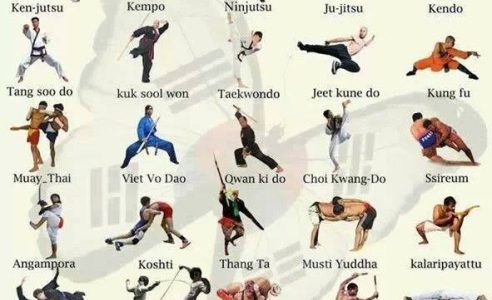Just How Do The Discipline-Centered Method Of Conventional Martial Arts And The Competition-Driven Nature Of Contemporary Fight Sports Differ? Discover The Considerable Distinctions That Can Form Your Experience
Just How Do The Discipline-Centered Method Of Conventional Martial Arts And The Competition-Driven Nature Of Contemporary Fight Sports Differ? Discover The Considerable Distinctions That Can Form Your Experience
Blog Article
Web Content By-Bright Haagensen
When you think of martial arts, do you lean much more toward the conventional practices or the contemporary combat sports? Each path supplies one-of-a-kind advantages and experiences, shaped by their approaches and training approaches. Standard martial arts highlight individual growth and discipline, while modern-day combat sports concentrate on competition and efficiency. Comprehending these differences can guide you in picking the right strategy for your journey. Yet exactly how do these distinctions materialize in training and approach?
The Approach and History Behind Standard Martial arts
While many people link martial arts with physical battle, the philosophy and history behind conventional martial arts run much deeper. You'll discover that these disciplines highlight individual development, self-control, and regard.
Stemming from old practices, conventional martial arts were commonly created for Self-Defense and spiritual growth. They embody concepts such as equilibrium, consistency, and self-discipline, guiding specialists past mere combating skills.
As you train, you'll not only learn methods but also acquire understandings into the society and values that shaped these arts. https://messiahbbcxj.ambien-blog.com/42024183/understanding-fighting-style-the-development-of-self-defense-classes and traditions, usually passed down via generations, promote a sense of community and belonging.
The Affordable Nature of Modern Combat Sports
Modern fight sports have actually changed the landscape of martial arts into an extremely competitive field, where athletes challenge in a test of ability, approach, and endurance.
You'll notice that competitors are often arranged with rigorous regulations and laws, guaranteeing justice and safety. These events attract large audiences, fueling the exhilaration and strength of matches.
Athletes train carefully, not just for physical expertise but also for mental strength, knowing that every detail counts in the ring. The adrenaline rush throughout competitors is palpable, as competitors press their limitations to declare triumph.
see post and artistry included, making modern-day fight sporting activities a thrilling spectacle that remains to advance and mesmerize enthusiasts around the world.
Training Methods and Strategies: A Relative Analysis
The affordable atmosphere of contemporary combat sports demands ingenious training approaches that differ considerably from traditional martial arts.
In modern-day training, you'll focus on details techniques, competing, and conditioning, often using drills that mimic real fight scenarios. You'll see a focus on measurable performance and regular competitors to evaluate your skills.
In contrast, typical martial arts focus on kinds, katas, and philosophical teachings, commonly emphasizing technique and respect over competition.
Krav Maga is normally much less extreme and might include repeated method as opposed to real-time sparring.
While both strategies construct ability and health and fitness, modern-day battle sports supply a more dynamic and versatile training environment, preparing you for instant challenges in the ring or cage.
Pick the path that lines up with your goals and interests.
Verdict
In selecting in between conventional martial arts and modern combat sporting activities, it truly boils down to what you value the majority of. If you're trying to find individual development, discipline, and a sense of community, traditional arts might be your finest fit. Yet if where can i watch the martial arts kid thrive on competitors and real-time difficulties, modern-day combat sporting activities could be the way to go. Eventually, both paths provide distinct advantages, so it's all about aligning your training with your individual objectives and interests.
